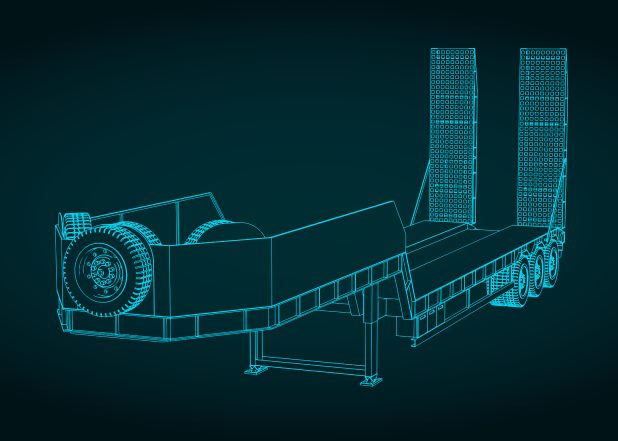by Michael Bani
7 minutes
AI in Pharma Manufacturing: Optimizing Production and Quality Control
Explore how AI transforms pharma manufacturing with optimized production, quality control, and efficiency.

Artificial intelligence (AI) has many possibilities in the pharmaceutical industry, from optimizing process design and control to forecasting the outcomes of clinical trials. However, there is one area of the pharmaceutical industry where AI has not been rapidly adopted, even though it’s the most crucial: pharma manufacturing.
Manufacturing is a key process in the pharmaceutical industry because the overall output of manufacturing processes decides the possible sales and revenue of the pharma company in the upcoming quarter. Manufacturing primarily involves two stages: production and quality control. Interestingly, AI has exceptional possibilities in both optimizing production and quality control. Here’s how AI-powered manufacturing can be beneficial for pharmaceutical companies.
The Role of AI in Pharma Manufacturing
Process optimization
Production optimization is a continuous and crucial process.. in the pharmaceutical industry because it ensures less equipment downtime, low product loss, fewer defective products, and high manufacturing quality. Considering its importance, in-house researchers are always looking into ways for optimizing production, which is a time-consuming task. However, it can be made simple using AI. AI has several promising applications in process optimization:
1. Equipment maintenance: Unplanned equipment downtime disrupts production, leading to shipment delays and higher costs. By providing historical data from equipment sensors and management logs, AI can be used to predict maintenance times and possible equipment failures. It can predict possible patterns in wear-and-tear of equipment, ensuring maintenance is undertaken promptly, which will not only extend the lifespan of equipment but reduce the chances of production halts/delays.

2. Process optimization: While process parameters are optimized at the laboratory level, they need to be tweaked once the process is taken to full-scale production. To this end, digital twins can be used to simulate processes and decide parameters. After the initial setup, AI can further optimize the process by analyzing real-time data, which will increase production efficiency and may reduce batch-to-batch consistency. For example, Pfizer already uses predictive analytics to optimize and streamline production.
3. Interdependence: Pharma manufacturing processes include various interdependent steps. For example, intermediates must be isolated and treated before they can be used in the following steps. However, this interdependence increases labour costs and decreases efficiency. AI systems can coordinate and even automate these processes, reducing the human intervention required.
4. Real-time monitoring: Traditional process monitoring relies heavily on manual sampling and analysis. In addition to being time-consuming, this process also delays changes. When the error is identified, the batch has already been manufactured. Hence, AI-powered sensors can be integrated to monitor production metrics continuously. The obtained data can then be fed into machine learning algorithms to identify potential discrepancies and raise the necessary alarms.
5. Waste reduction and sustainability: AI can also reduce waste generation. AI-powered manufacturing can suggest adjustments to existing processes to reduce waste, for example, by minimizing solvent use or optimizing water usage. This will support the pharma company’s sustainability goals and help it reduce raw material costs.
Quality control

Quality control is another key step in pharma manufacturing; it ensures the quality and efficacy of the final product meet the standards set by regulatory authorities. Hence, in addition to optimizing production, AI can also improve quality control in pharma manufacturing. Here are some use cases of AI-driven quality control:
1. Defect detection: Traditional defect detection relies on manual inspection, which is slow, inconsistent, and error-prone. AI-powered vision systems can analyze high-resolution images of products to identify any physical defects in the product, such as cracks, poor labelling, and discolouration. This will reduce inspection time and errors.
2. Batch consistency: Small variations in raw materials, such as colour and weight, and environmental conditions, such as temperature and humidity, can result in inconsistencies between batches. However, these changes may be too small to identify visually. Hence, machine learning algorithms can analyze data from all production stages to identify deviations. Then, real-time adjustments can be made to ensure batch-to-batch consistency.
3. Real-time monitoring: The most critical quality check is the post-production quality check. However, at this stage, the product batch has already been manufactured. If a defect/deviation is detected, the entire batch may need to be scrapped. This issue can be avoided by integrating AI-enabled sensors and Internet of Things (IoT) devices, which can collect real-time information like active ingredient concentration and moisture content and then analyze it to identify deviations. Potential issues can be highlighted immediately, preventing problems early in the production cycle.
AI Technologies in Pharma Manufacturing: Key AI-powered technologies used in pharma manufacturing
AI has some unique and beneficial use cases in pharma manufacturing. Various AI-powered technologies can be used for optimizing production and ensure quality control. Here are five main AI-powered technologies that have high potential in pharma manufacturing.
Advanced process control (APC)
Advanced process control (APC) uses machine learning algorithms to control complex manufacturing processes like mixing, granulation and separation. APC can adjust environment controls such as temperature, pH, and humidity to maintain optimal conditions throughout production, ensuring consistent quality across batches and minimizing wastage.
Digital twins
A digital twin is a simulation platform that creates an exact virtual replica of a real-world object or process. Digital twins can be used to create simulations of processes before they are scaled up or down or when the process is shifting from lab to production. They can also be used for optimizing production processes currently used in facilities. This tool can improve troubleshooting, facilitate optimization efforts, and reduce delays due to equipment and process faults.
Predictive analytics
Predictive analytics is an excellent AI-powered tool that can be integrated into all aspects of pharmaceutical manufacturing. However, it is most beneficial in production, where it can be used to predict maintenance requirements and possible disruptions. Using historical data on equipment maintenance, accurate sensors, and machine learning, predictive analytics can predict patterns in equipment shutdowns and production delays. Consequently, this will help staff optimize maintenance schedules, reducing downtime.
Automated material handling systems
Automated material handling systems, AKA AI-driven robots, can be used to transfer material, pack products, and fill vials. While many of these applications have already been realized, many are not; for example, vial filling is often still done by hand. Furthermore, automated material handling systems can also transfer intermediates from one production stage to another, reducing contamination risk and labour costs.

IoT
IoT with AI integration can be used for real-time monitoring and control of processes. These can be used to monitor production parameters in real-time and make necessary changes. Furthermore, red flags can be raised immediately if any parameter deviates significantly, and production can be halted to ensure the problem is dealt with. This will help improve regulatory compliance and reduce the chances of manufacturing poor-quality products.
However, while AI has many use cases in pharmaceutical manufacturing processes, it has not been adopted by many pharma companies. Here are a few challenges hindering the application of AI in pharma manufacturing.
Challenges for AI in Pharma Manufacturing
Poor integration of data management practices
Digitization of manufacturing processes, especially real-time monitoring and control, will generate a lot of information about a process and a product. This increases the amount of data generated by increasing the frequency of recording and type of data recorded. However, if the amount of raw data collected increases substantially, data management needs to be improved as well. For example, the integrity, regulatory compliance, and relevance of the generated data need to be appropriately managed before they can be used.
Additionally, data needs to be stored in a structured manner to ensure simple retrieval and analysis to aid in decision-making. Current data management systems and practices may not be up to par with this requirement, and companies may have to adjust their data management practices to make the obtained data useful.
Oversight in Pharma Manufacturing data
Most AI-powered manufacturing tools rely on cloud or edge computing. The software that controls these tools may be on-site, but the data generated and other software functions (e.g., version updates) will be hosted on third-party data management systems. In such situations, it is difficult to manage data integrity and quality.
While regulatory agencies allow the use of third parties for such functions, the agreements may not appropriately cover data security, leading to regulatory challenges. For example, interactions between cloud and IoT applications and real-time process control/monitoring systems can make it difficult to establish data traceability, leading to questions regarding data security.
Lackluster guidelines
Realistically, major pharma companies can develop individual AI models for manufacturing. However, considering the stringent regulatory landscape in the pharma industry, their implementation is challenging. Furthermore, because most AI models can evolve due to continuous learning, it is challenging to determine when an AI model has evolved so much that it requires regulatory notification.
Consequently, clear guidelines need to be developed specifically for the use of AI in pharma manufacturing. Developing these guidelines may facilitate the adoption of AI in the industry as more companies become clear about what is expected of them and how they can maintain compliance while integrating new tech.
Addressing these challenges is the key to integrating AI in pharma manufacturing. However, these challenges, especially regulatory compliance issues, are not easily overcome. Pharma companies must demonstrate proof of concept before AI can be successfully integrated into their manufacturing processes.
Conclusion
AI in pharma manufacturing is still a work in progress. It has numerous advantages and use cases: it can simplify real-time quality control, it can prevent batch defects, it can address faults early in the production cycle, and many more! However, while many AI-powered technologies can be adopted to realize these unique use cases, such as predictive analytics and machine learning, few companies have invested in them. We believe that this is a potential area of growth, a direction pharma companies should consider investing in regardless of the grave and large hurdles faced because, eventually, it will result in revenue.
If you’ve enjoyed this article, you can read Pharma Now’s articles on AI in other key pharmaceutical processes, including drug discovery, regulatory compliance, pharmacovigilance, and clinical trials!
FAQs
1. Can AI improve the efficiency of pharma manufacturing?
Yes! AI can improve pharma manufacturing efficiency by predicting outcomes, automating decision-making, reducing equipment downtime, optimizing production, and analyzing real-time data.
2. Is the implementation of AI in pharma manufacturing costly?
Implementing AI in pharma manufacturing may incur significant costs due to investment in technology and employee training. However, its long-term benefits may outweigh the costs.
3. Can the same AI tools be used across pharma companies?
AI tools cannot be easily used in different pharma companies as each has unique products and processes. Ultimately, even if the process is the same, actual parameters vary, and tuning is required.
.webp)



